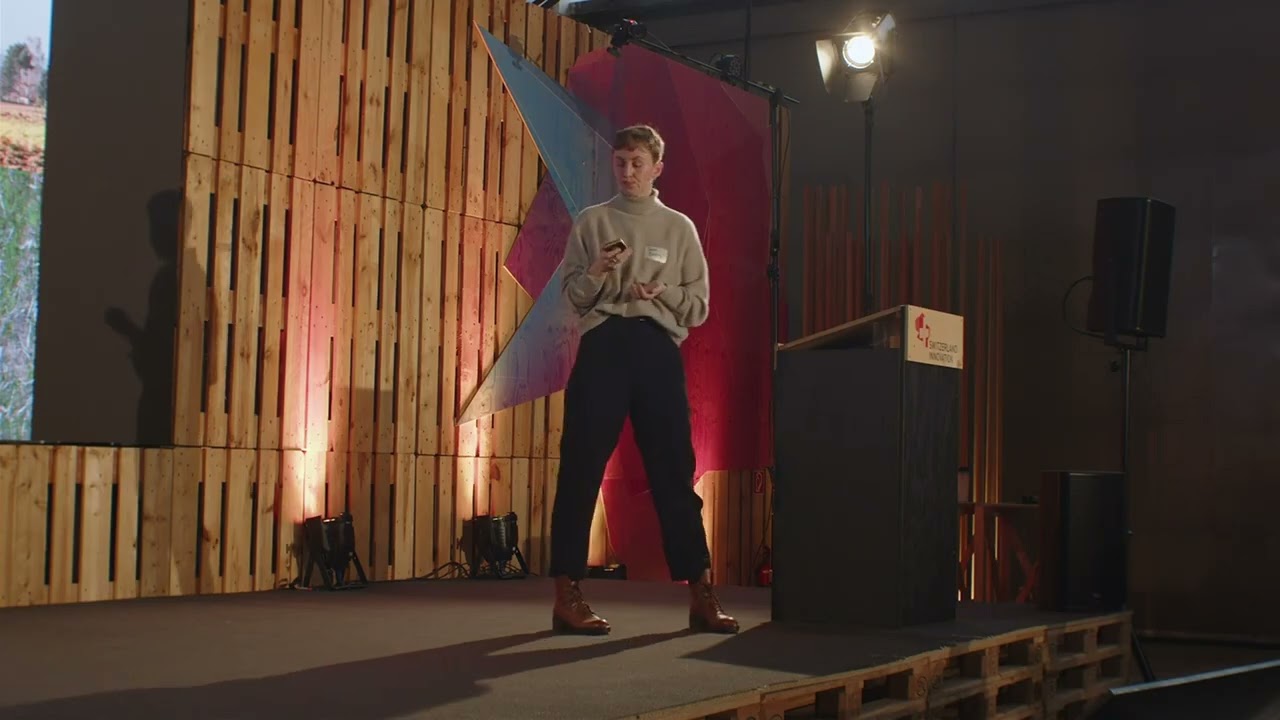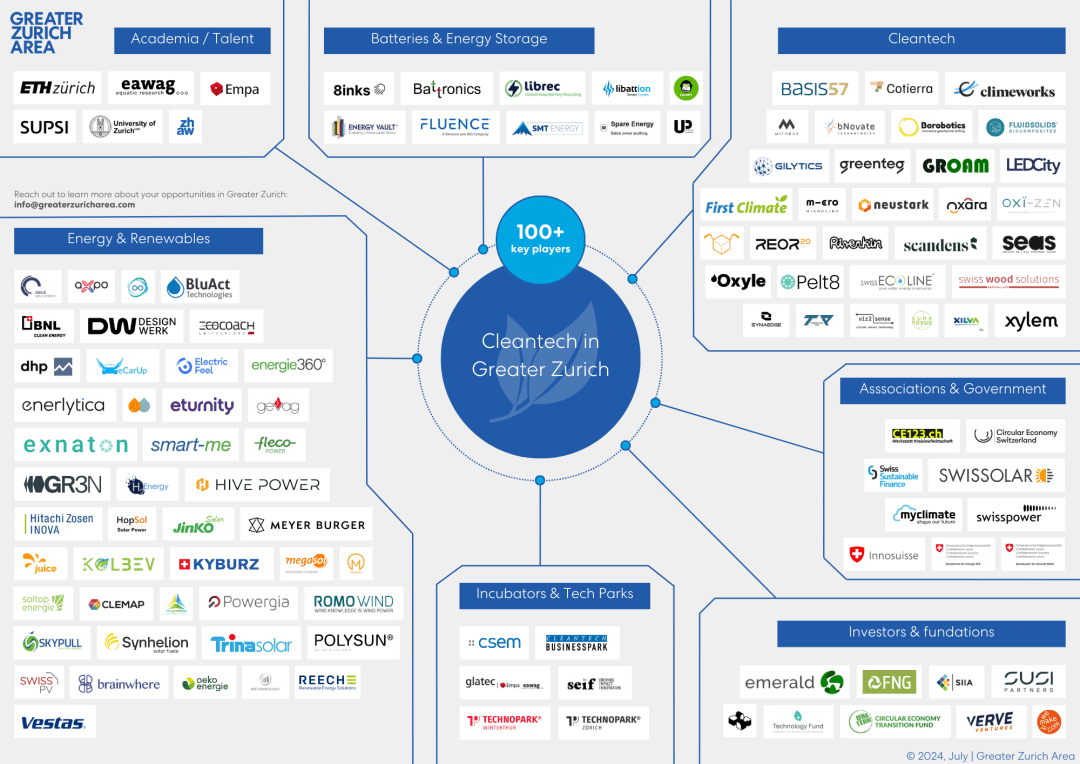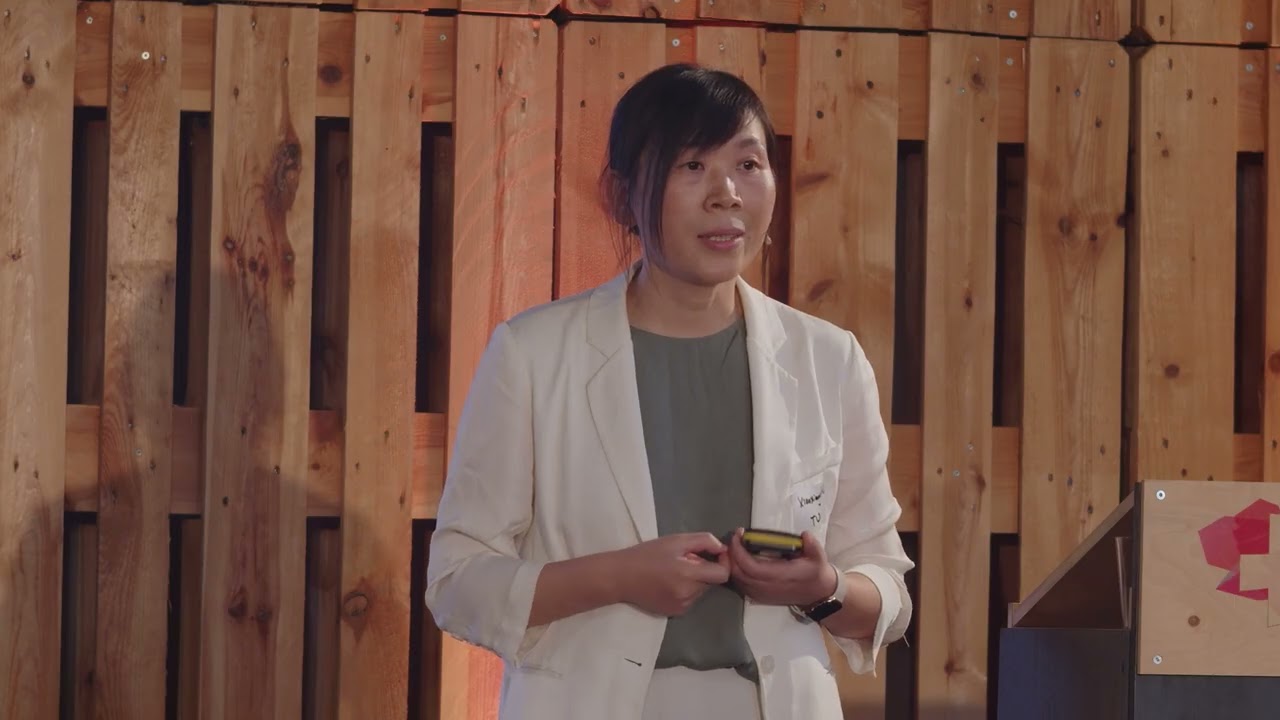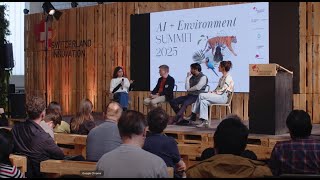Hosted at Switzerland Innovation Park Zurich as part of the Zurich AI Festival, the AI + Environment Summit 2025 brought together leading scientists, engineers, entrepreneurs, and policymakers to explore how AI is transforming environmental research and action. From biodiversity monitoring to satellite-based climate analytics, the summit showcased how data, modeling, and machine learning are reshaping the way we understand and protect the planet.
In a short opening video, Sara Beery (MIT) and Millie Chapman (ETH Zurich) captured the summit’s core question:
💡 How can artificial intelligence help us translate complex, uneven data into fair, actionable environmental strategies?
Their reflections set the tone for a day focused on bridging global data, ecological insight, and responsible decision-making. What followed were in-depth sessions from world-leading researchers — including voices from MIT, TUM, and ETH Zurich — each showing how advanced AI can turn environmental data into real-world impact.
AI for Biodiversity: Prof. Sara Beery (MIT) on species modeling
Prof. Dr. Sara Beery, Assistant Professor at MIT’s Computer Science and Artificial Intelligence Laboratory (CSAIL), develops computer vision methods for large-scale biodiversity and environmental monitoring. Her research focuses on making AI models resilient to domain shifts, imperfect data, and long-tailed species distributions – bridging ecological science and modern machine learning to support real-world conservation.
In her keynote, Beery introduced her team’s work on deep multimodal species occupancy modeling – a framework that merges camera-trap imagery, satellite data, and environmental covariates to estimate species presence more accurately. By accounting for real-world data complexity and detection uncertainty, the model moves beyond idealized lab settings to deliver insights that inform conservation policy, wildlife management, and habitat restoration.
💡Key takeaway:
Bringing AI into conservation means building models that can cope with nature’s messiness—integrating field data, uncertainty, and scale to deliver predictions robust enough for real ecological decisions.
Also Watch: Prof. Devis Tuia (EPFL / UZH) on Machine Learning for Earth
For a Swiss perspective, explore Prof. Dr. Devis Tuia’s keynote on “Machine Learning for Earth: Monitoring the Pulse of Our Planet with Sensor Data, from Your Phone All the Way to Space”. He shows how remote sensing data from satellites, drones, and ground sensors fuels machine learning (ML) models that transform raw signals into actionable insights for climate and biodiversity monitoring.
🎥Watch Prof. Tuia's keynote here.
Explore Cleantech innovation in Greater Zurich
Explore Cleantech innovation in Greater Zurich
From smart grids and renewable energy to advanced materials and sustainable mobility, the Greater Zurich Area is home to one of Europe’s most dynamic cleantech ecosystems.
AI4EO for social good: Prof. Xiaoxiang Zhu (TUM) on remote sensing with ML
Prof. Dr. Xiaoxiang Zhu, Chair Professor for Data Science in Earth Observation at the Technical University of Munich (TUM), directs ML4Earth, the AI4EO Lab, and the Munich Data Science Institute. She develops remote sensing and machine learning (ML) methods that turn global Earth-observation data into actionable insights for urbanization, climate, and sustainable development.
In her keynote, Zhu shows how AI for Earth Observation (AI4EO) can serve society – from creating the Global Building Atlas, a worldwide 3D dataset of building footprints and heights, to tracking glacier retreat across decades of satellite imagery. She called for Earth-observation foundation models that are physics-informed, uncertainty-aware, and multi-sensor by design.
💡Key takeaway:
To deliver real social impact, AI for Earth Observation must go beyond accuracy – models need to be physically consistent, transparent, and scalable to turn remote-sensing data into trustworthy climate and urban insights.
Greater Zurich – where global AI conversations turn into impact
Global researchers, industry leaders, and policymakers come here to stress-test ideas, align standards, and build partnerships for sustainable innovation.
If you’re developing AI for climate, biodiversity, energy, or Earth observation, the Greater Zurich Area is where frontier research connects with real-world markets and investment opportunities.
AI to Impact – How environmental AI earns trust from lab to policy and markets
This closing panel discussion explored how AI can move beyond prediction to deliver measurable, equitable impact for climate, biodiversity, and society.
Panelists:
Prof. Dr. Millie Chapman (ETH Zurich)
Assistant Professor of Environmental Policy at ETH Zurich. Her group works at the intersection of decision science, ecology, and data justice, critically exploring how computational tools can help meet biodiversity and climate targets. Formerly at Google Research, the National Center for Ecological Analysis and Synthesis (NCEAS), and Climate Change AI (CCAI), Chapman bridges AI, environmental policy, and ethics.
🎥Watch her keynote: How AI can help inform just Environmental FuturesDr. Michael Anthony (Vertify.Earth)
Co-founder and Executive Director of Vertify.Earth, developing AI tools for nature-positive interventions in fragile and climate-sensitive geographies. He advocates for transparency, local context, and trust between data producers and policy users.
🎥 Watch his keynote: Context and Caution in Environmental AIProf. Dr. S. Karthik Mukkavilli (Mercuria / KAIST)
Group Head of AI at Mercuria Energy Group and Adjunct Professor at Korea Advanced Institute of Science and Technology (KAIST), focusing on foundation models, multimodal data, and reinforcement learning for Earth and energy systems. His work connects scientific modeling with real-world market deployment.
🎥 Watch his keynote: AI for Complex Systems
The discussion revealed that building better models isn’t enough – impactful AI must integrate social, economic, and ethical realities. Chapman emphasized participatory design and fairness; Anthony stressed trust and data provenance amid political and regulatory tensions; Mukkavilli highlighted responsible deployment in high-stakes domains like energy trading and climate forecasting.
💡 Key takeaway:
Environmental AI creates impact when it’s transparent, auditable, and co-designed with the people who use it – bridging lab insights with policy, markets, and conservation.
More expert talks and keynotes
Discover additional recorded sessions from the AI + Environment Summit 2025:
Dr. Mikolaj Czerkawski (Asterisk Labs / ex-ESA)
Researcher in AI, computer vision, and Earth observation, and co-founder of the Major TOM community project for collaborative EO datasets. Czerkawski explains how data-centric AI pipelines and generative modelling are reshaping how satellite data are curated, shared, and reused.
🎥 Watch the talk: On the Evolutions of EO SpheresDr. Jochem Braakhekke (University of Zurich / NPOC)
Academic Associate at the Remote Sensing Laboratories (RSL) and consultant with Switzerland’s National Point of Contact for Satellite Data (NPOC). He outlines challenges and opportunities in accessibility and interoperability of Earth-observation datasets and how AI can improve their practical use.
🎥 Watch the talk: Satellite Data Availability and UsabilityProf. Dr. Irena Hajnsek (ETH Zurich)
Full Professor at ETH Zurich’s Department of Civil, Environmental and Geomatic Engineering, Hajnsek presents advances in AI-driven enhancement of EO applications, from data fusion to automated analysis workflows.
🎥 Watch the talk: How AI Can Improve Earth Observation Application ProductsProf. Dr. Marc Rußwurm (Wageningen University)
Assistant Professor of Machine Learning and Remote Sensing, Rußwurm demonstrates how training AI models to “play” Satellite GeoGuessr enables environmental embeddings—AI systems that build mental maps of the planet to interpret geospatial context.
🎥 Watch the talk: Earth Embeddings: Learning Mental Maps in Neural Nets
🎬 Watch the full playlist on YouTube: AI + Environment Summit 2025
More News
Meet with an expansion expert
Our services are free of charge and include:
- Introduction to key contacts in industry, academia, and government
- Advice on regulatory framework, taxes, labor, market, and setting up a company
- Custom-made fact-finding visits, including office and co-working space




